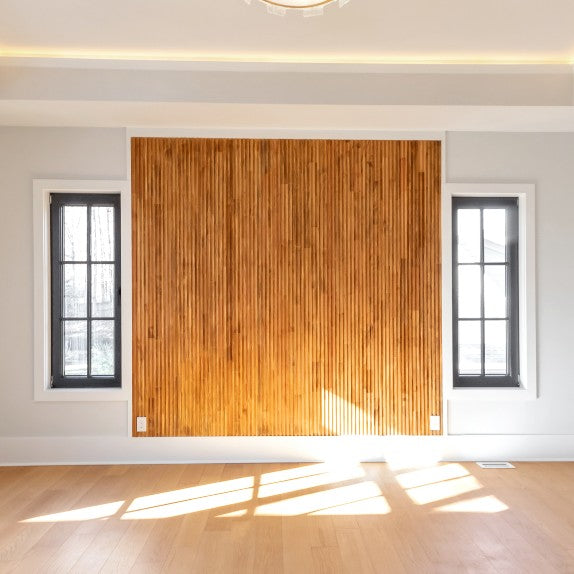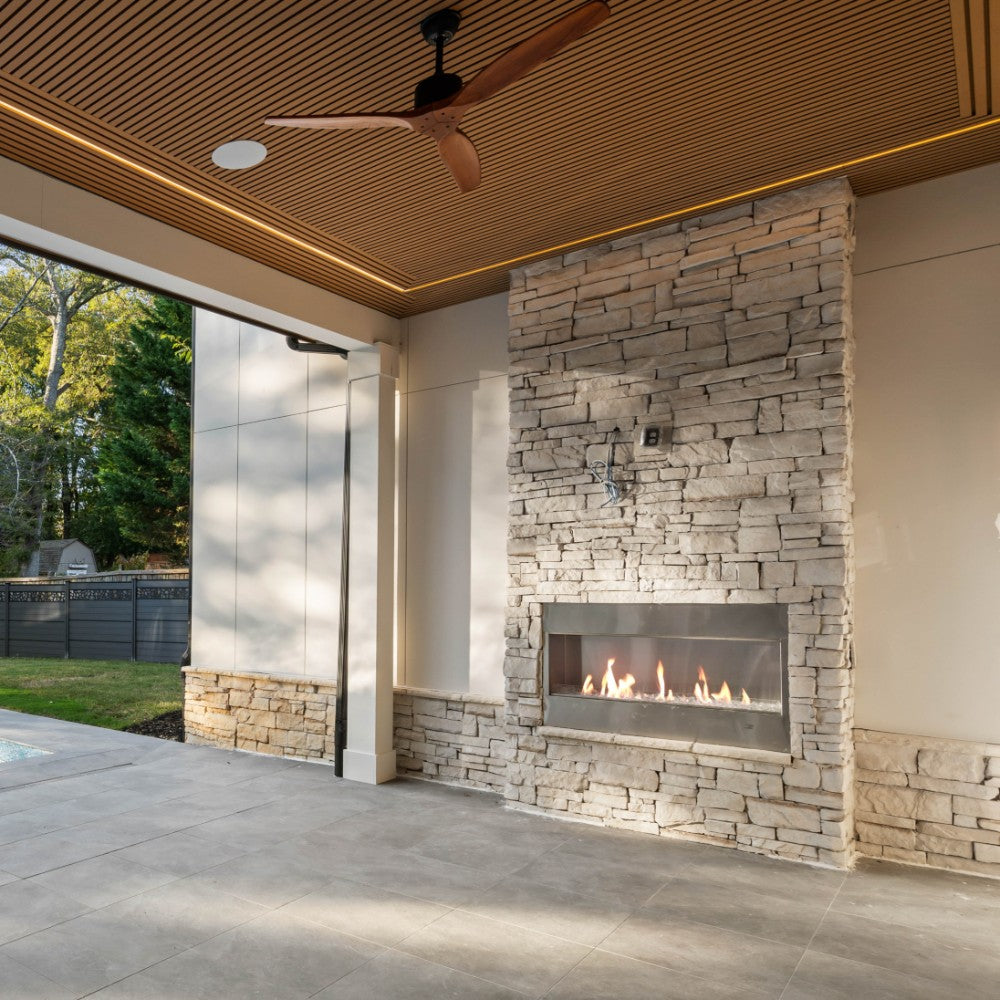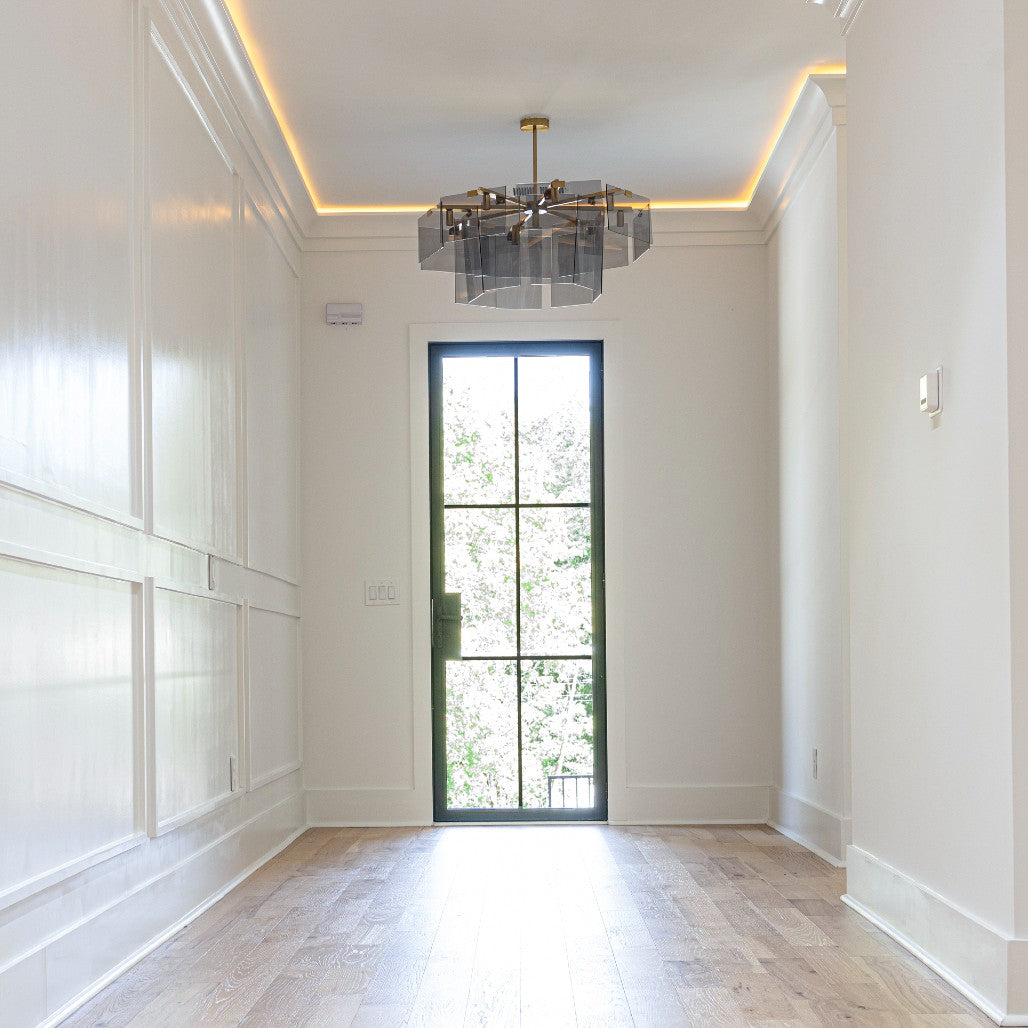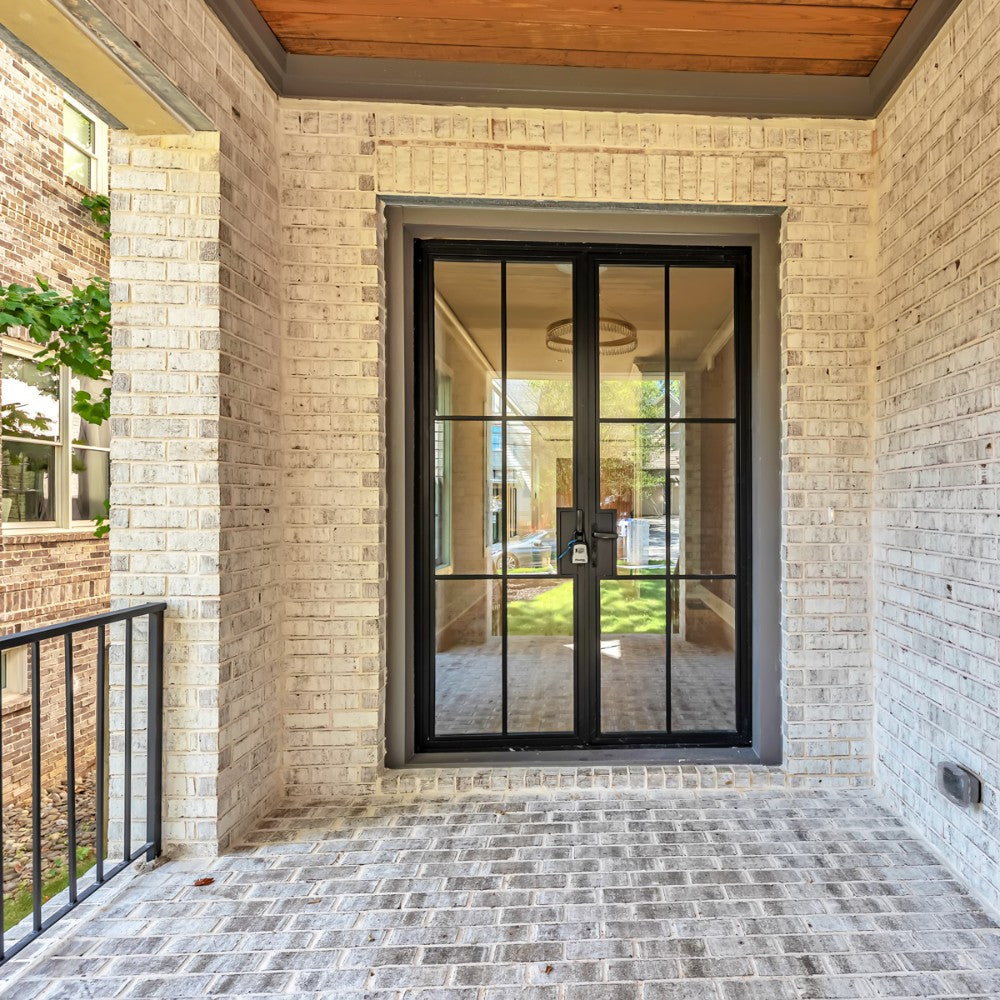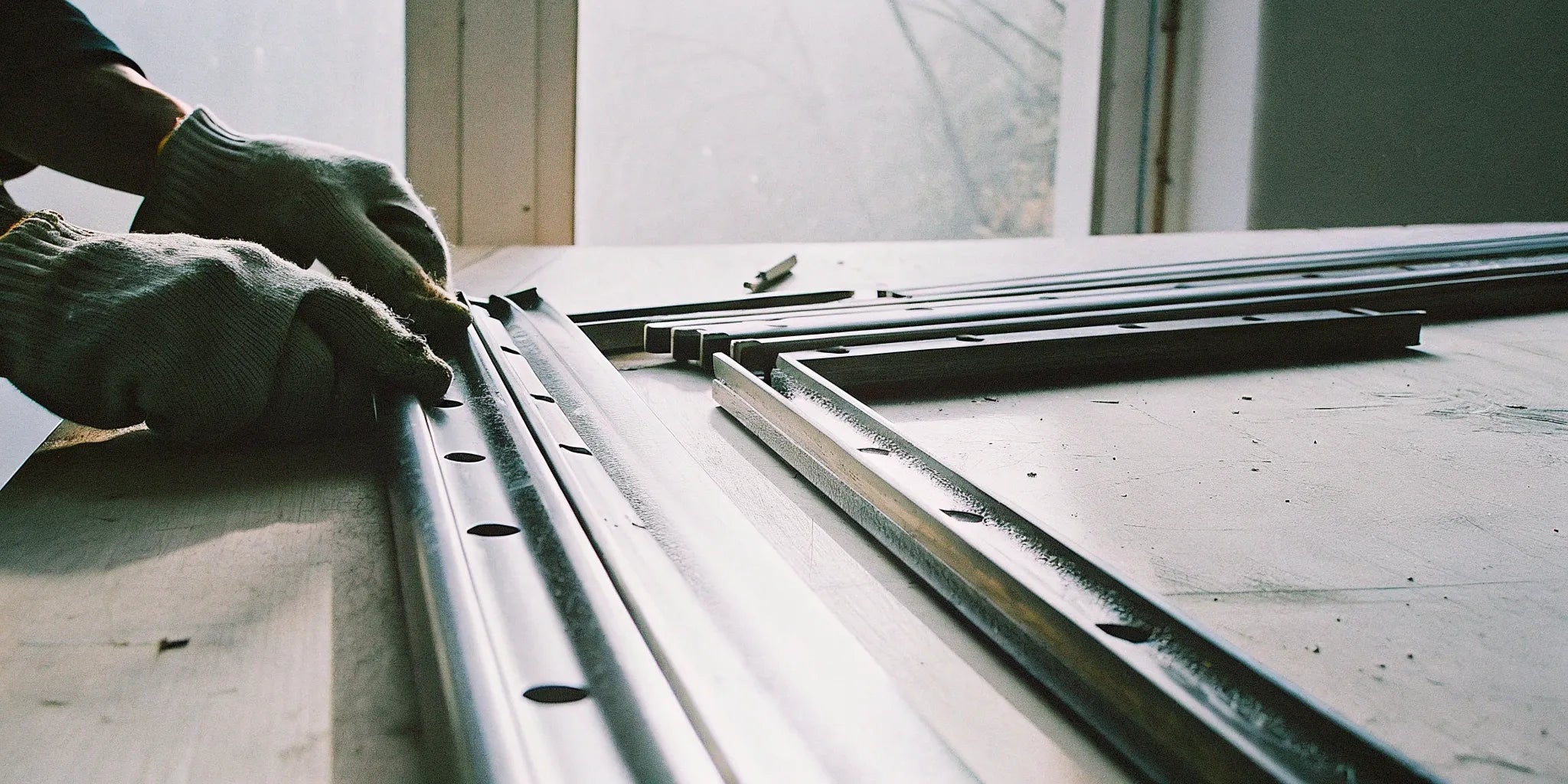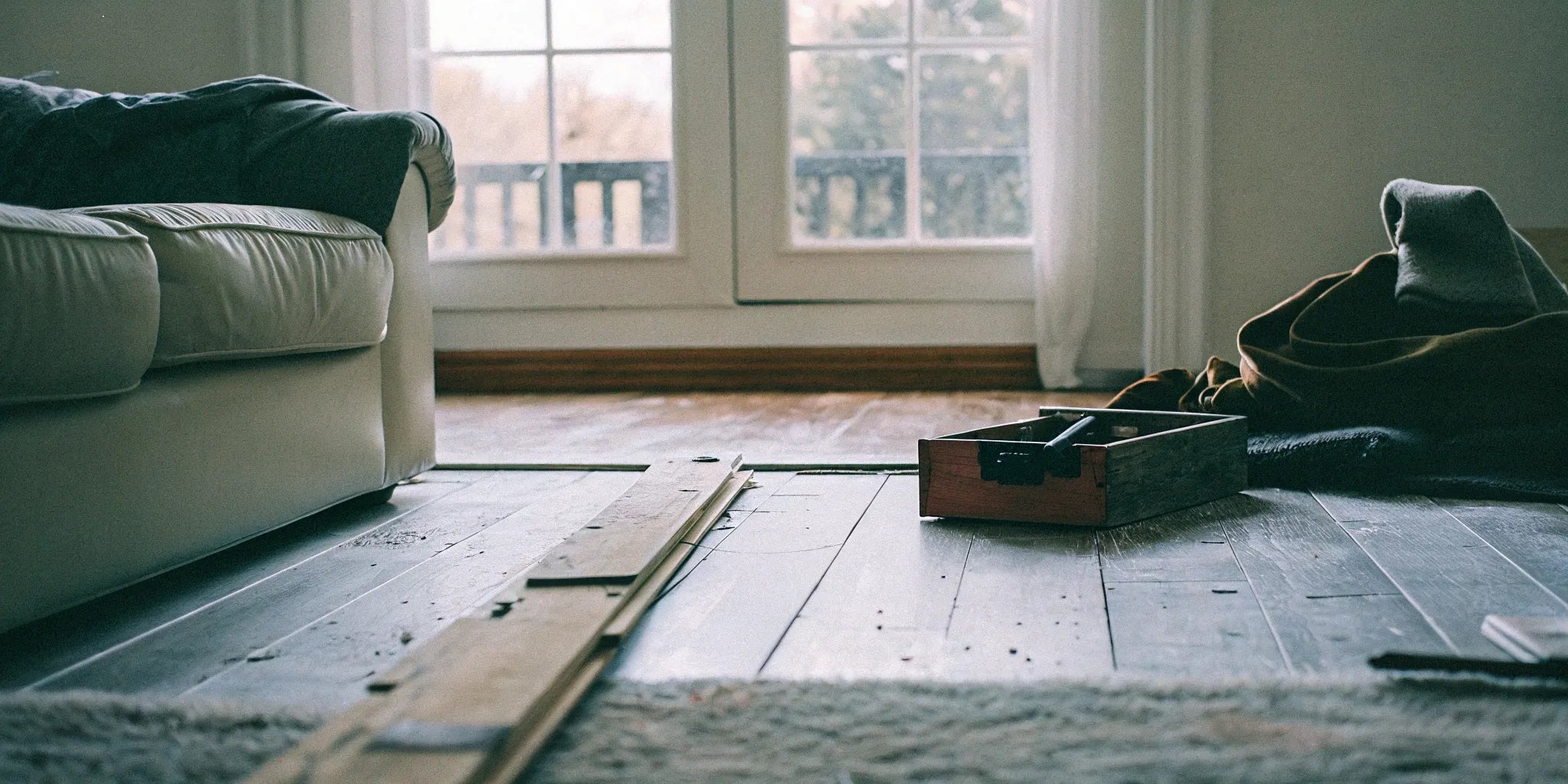
5 Key Disadvantages of Engineered Wood Flooring
Your floors have to stand up to real life—from kids dropping toys to pets skidding around corners. Engineered wood looks tough, but its surface can be surprisingly delicate. That beautiful top layer of real wood is often very thin, making it prone to dents, scratches, and scuffs that can’t be easily repaired. Daily life can quickly take a toll, and because you can’t simply sand down the damage like you could with solid wood, those imperfections become permanent. Before you commit, it’s important to consider if this material truly fits your household’s activity level. Let’s explore the practical, day-to-day disadvantages of engineered wood flooring that impact how you actually live on them.
Key Takeaways
- Refinishing is Limited, So Choose Your Veneer Wisely: The thickness of the top wood layer determines the floor's lifespan. A thin veneer can't be sanded down to remove deep scratches, meaning damage can be permanent and the floor may need replacing sooner than you think.
- It Requires a Stable Environment and Specific Care: Engineered wood is not waterproof and can be damaged by spills, humidity, and temperature swings. You'll need to maintain a consistent indoor climate and use only manufacturer-approved cleaners to avoid warping or ruining the finish.
- Look Beyond the Initial Price Tag: A lower upfront cost often means a thinner veneer and shorter lifespan. Factor in professional installation, potential repair challenges, and its lower impact on home resale value compared to solid hardwood to understand the true investment.
What Is Engineered Wood Flooring?
Before we get into the potential downsides, let’s be clear on what engineered wood flooring actually is. Think of it as a hybrid product. Unlike solid hardwood, which is one piece of wood from top to bottom, engineered flooring is constructed in layers. It has a real hardwood veneer on the surface—which is why it looks so much like the real thing—but underneath, it has a core made of multiple layers of plywood or high-density fiberboard (HDF) bonded together.
This layered structure is designed to give the flooring more stability, making it less likely to expand or contract with changes in humidity and temperature. It’s a clever design, but that same layered construction is also the source of many of its limitations. The thickness of that top wood layer, the quality of the core, and the adhesives holding it all together can vary dramatically from one product to the next. Understanding this construction is the first step to making an informed choice for your home.
How It's Made
The manufacturing process for engineered wood flooring involves pressing and gluing several layers of material together. At the very top is a thin slice of genuine hardwood, called the veneer. This is the part you see and walk on, and it can be made from various species like oak, maple, or hickory. Beneath this veneer lies the core, which typically consists of three to twelve layers of plywood or HDF arranged in a cross-grain pattern. This cross-graining is what gives the plank its stability. The idea is that each layer counteracts the natural tendency of the others to move, reducing warping. While it looks like solid hardwood flooring, its internal structure is completely different.
Why Quality Varies
Not all engineered wood is created equal—not by a long shot. The quality and price are largely determined by two things: the thickness of the top veneer and the quality of the core. Cheaper options might have a paper-thin veneer that can’t be sanded or refinished if it gets damaged. Higher-end products will have a thicker veneer that allows for at least one refinishing. The core material also matters. A high-quality plywood core is generally more durable and moisture-resistant than a low-density fiberboard core. Additionally, the adhesives used in cheaper products can sometimes release volatile organic compounds (VOCs), which can affect your home's indoor air quality.
Understanding the Price Tag
Many people assume engineered wood is always the more affordable option, but that’s a common misconception. While entry-level engineered flooring is certainly cheaper than solid hardwood, the price range is incredibly wide. High-quality engineered planks with a thick veneer, a premium hardwood species, and a robust plywood core can easily cost as much as—or even more than—solid hardwood flooring. When you’re comparing prices, make sure you’re also comparing the quality specs. A low price tag might seem appealing at first, but it could mean you’re getting a product with a thin veneer that will wear out quickly and can't be repaired.
Know Its Limitations
Engineered wood flooring looks fantastic and offers great stability, but it’s not without its trade-offs. Before you decide it’s the right fit for your project, it’s important to understand where it falls short, especially compared to traditional solid hardwood. These limitations aren’t necessarily deal-breakers, but knowing them upfront will help you set realistic expectations for your floor’s appearance, durability, and lifespan. From refinishing constraints to installation quirks, let’s walk through the practical boundaries of engineered wood so you can make a choice you’ll be happy with for years to come.
The Trouble with Refinishing
One of the biggest selling points of solid hardwood is its ability to be sanded and refinished over and over, essentially giving you a brand-new floor every decade or so. Unfortunately, the same can’t be said for most engineered wood. Because it’s constructed with a thin top layer of real wood over a core of plywood or fiberboard, there’s a strict limit to how much sanding it can take. Cheaper options with a very thin veneer can’t be refinished at all. Higher-quality engineered planks with a thicker top layer might handle one or two refinishes, but that’s usually the maximum. This is a critical factor to consider if you’re planning for the long-term life of your home.
The Thin Veneer Problem
The refinishing issue comes down to the thickness of the top hardwood layer, also known as the veneer. This is the part you see and walk on, and it’s what gives the flooring its authentic wood look. When you sand a floor, you’re removing a very fine layer to erase scratches, dents, and old finish. With engineered wood, sanding too much or too aggressively can easily wear through the veneer and expose the core material underneath. Once that happens, the plank is permanently damaged and will need to be replaced. This is why it’s so important to check the veneer thickness before you buy, as it directly impacts the floor’s potential for future restoration and its overall value.
It Won't Last Forever
Because of its limited refinishing capabilities, the lifespan of engineered wood flooring is generally shorter than that of solid hardwood flooring. While a well-maintained solid wood floor can last for a century or more, an engineered floor’s longevity is tied to its top veneer. Once that layer is worn, scratched, or damaged beyond what a light refinishing can fix, the floor has reached the end of its life. For many homeowners, this is a fair trade-off for the initial cost savings and dimensional stability. However, if you’re looking for a “forever” floor that can evolve with your home through generations, solid wood is often the more durable investment.
Installation Isn't Always Easy
While some engineered wood floors are designed for simple click-lock installation, the process isn’t always foolproof. Just like solid wood, engineered planks need time to acclimate to their new environment. This means letting the boxes of flooring sit in the room where they’ll be installed for several days. This allows the wood to adjust to your home’s specific temperature and humidity levels. If you skip this crucial step, the planks can swell or shrink after installation, leading to unsightly gaps, cracks, or buckling. Proper subfloor preparation is also key to ensuring a smooth, quiet, and long-lasting result, which is why many homeowners and contractors still prefer a professional installation.
Is It Really Durable?
When you’re choosing new floors, durability is probably at the top of your list. Engineered wood is often presented as a tough alternative to solid hardwood, but it’s important to understand its limitations. While its layered core provides great stability against humidity, the surface you actually live on is where its durability is tested. That top layer of real wood, called the veneer or wear layer, is what gives the flooring its beauty, but it's also its most vulnerable part. The thickness of this layer can vary dramatically between products, and that single factor largely determines how well it will hold up over time.
Unlike solid hardwood flooring, which can be sanded down and refinished multiple times to erase years of wear, engineered wood has a finite lifespan for repairs. A thin wear layer might not survive even one sanding. This means that the scratches, dents, and scuffs your floor accumulates from daily life can become permanent features. Before you commit, it’s crucial to look past the showroom shine and consider some of the most common durability issues you might face.
Prone to Surface Wear
The top layer of engineered wood is what gives it that beautiful, natural look, but it’s also its weak point. This veneer is often quite thin, and the factory-applied finish can wear down over time in high-traffic areas like hallways and entryways. Cheaper products are especially susceptible, as they tend to have thinner veneers and less robust protective coatings. Because of this, engineered wood can dent and scratch more easily than its solid wood counterpart. Over time, this wear can create dull pathways through your home, diminishing the floor's overall appearance and making it look older than it is.
Scratches and Dents Happen Easily
If you have an active household with kids, pets, or a tendency to drop things, you’ll want to pay close attention here. The core of engineered wood might be strong, but the surface is surprisingly delicate. A dropped toy, a dragged chair, or even your dog’s claws can leave behind noticeable scratches and gouges. Deeper impacts from heavy objects can create dents that are difficult, if not impossible, to repair without replacing the entire plank. This is especially true for lower-quality options, which simply don't have the surface hardness to withstand daily accidents and mishaps.
Fading from Sunlight
A sun-drenched room is a beautiful thing, but it can be tough on your floors. Like solid hardwood, engineered wood is susceptible to fading from prolonged exposure to UV rays. Over time, the areas of your floor that get direct sunlight will lighten in color, a process that can be surprisingly fast. This becomes particularly obvious when you move a rug or a piece of furniture and find a darker, unfaded patch underneath. This uneven fading can permanently alter the look of your room, forcing you to be strategic with window coverings and furniture placement to minimize the effect.
That Hollow Sound Underfoot
One of the subtle yet significant differences between solid and engineered hardwood is the sound it makes when you walk on it. Engineered wood is often installed as a "floating floor," meaning the planks are clicked together and laid over a subfloor without being glued or nailed down. This installation method can create a hollow, clacky sound underfoot that some people find cheap-sounding and distracting. It lacks the solid, reassuring feel of traditional hardwood, which can detract from the overall sense of quality in your home. While a high-quality underlayment can help muffle the sound, it rarely eliminates it completely.
Watch Out for Water and Weather
Engineered wood is often praised for being more stable than solid hardwood, but it’s far from invincible when it comes to the elements. Its layered construction, which gives it strength, also creates vulnerabilities to moisture, humidity, and temperature swings. If you’re not prepared for how your floor will react to its environment, you could end up with warping, gapping, or other damage that’s difficult and costly to fix. Understanding these limitations is crucial for both planning a project and maintaining your floors for years to come.
For contractors, explaining these factors to clients upfront can manage expectations and prevent frustrating callbacks. For homeowners, it means choosing a floor that truly fits your home’s climate and your family’s lifestyle, not just your design aesthetic. It’s not just about wiping up spills quickly; it’s about creating a stable environment where your floors can thrive. From the initial acclimation period to long-term climate control, the way you handle water and weather will directly impact the beauty and longevity of your engineered wood floors. Let’s walk through the key environmental factors you need to keep on your radar.
It Doesn't Like Water
One of the biggest misconceptions about engineered wood is that it’s waterproof. It’s not. While it handles moisture better than solid hardwood, standing water is its enemy. Spills that aren’t wiped up immediately can seep between the planks and into the core layers. Once moisture gets into the core, the wood can swell, causing the surface veneer to warp, bubble, or even delaminate from the base. This kind of damage is often irreversible. That’s why engineered wood is generally not recommended for full bathrooms, laundry rooms, or basements. For those high-moisture areas, you’re much better off with a completely waterproof material like porcelain tile.
The Impact of Humidity
Humidity is another form of moisture that can wreak havoc on engineered wood floors. Before installation, the planks need to acclimate to the room’s specific temperature and humidity levels for several days. If you skip this crucial step, you’re asking for trouble. Installing planks that are too “dry” in a humid room will cause them to absorb moisture and swell, leading to buckling. On the other hand, installing planks that are too “moist” in a dry room will cause them to shrink as they dry out, creating noticeable gaps between the boards. Proper acclimation ensures the wood is stable before it’s locked into place, preventing movement down the line.
Sensitive to Temperature Swings
While the cross-layered core of engineered wood makes it more dimensionally stable than solid wood, it can still be affected by significant or rapid temperature changes. The wood and the adhesives holding the layers together will naturally expand and contract as temperatures rise and fall. In homes with inconsistent heating and cooling or in climates with extreme seasonal shifts, this constant movement can stress the planks over time. It’s important to maintain a relatively stable indoor climate year-round to minimize this effect. If your project is in an area with dramatic temperature swings, considering other durable flooring options might be a wise move to ensure long-term performance and stability.
Concerns About VOCs
The adhesives used to bond the layers of engineered wood together can sometimes be a source of volatile organic compounds (VOCs), like formaldehyde. These chemicals can be released into the air after installation, a process known as off-gassing, which can affect your home’s indoor air quality. This is a bigger concern with cheaper, lower-quality products that may use formaldehyde-based glues to cut costs. To protect your health, it’s smart to look for flooring that is certified as low-VOC or no-VOC. Reputable suppliers are usually transparent about the materials and adhesives used in their products, so don’t hesitate to ask for documentation or choose brands known for their commitment to safety and quality.
Are There Hidden Costs?
The sticker price of engineered wood flooring can be tempting, but it doesn't always tell the whole story. Before you commit, it’s smart to look at the full financial picture, including costs that might not be obvious at first glance. From installation day to the day you sell your home, several factors can add to the total cost of ownership. Thinking about these potential expenses ahead of time helps you create a realistic budget and avoid surprises down the road. Let's break down some of the potential hidden costs so you can make a fully informed decision for your project.
The Cost of Installation
While engineered wood is often cheaper per square foot than solid hardwood, the material cost is only one part of the equation. Unless you're an experienced DIYer, you'll likely need to hire a professional for installation, which adds a significant labor cost. Proper installation is key to performance, and mistakes can lead to bigger problems later on. It's also important to remember that a lower initial price can sometimes reflect a lower quality product. When comparing options, consider the long-term value you get from more durable materials like hardwood flooring, which may justify a higher upfront investment.
Long-Term Maintenance Costs
Engineered wood requires specific care to keep it looking good, and the cost of that maintenance can add up. You can't just use any cleaner from the store; harsh chemicals, wax-based products, and steam mops can damage the finish and even cause the layers to delaminate. You'll need to purchase pH-neutral cleaners designed for engineered floors. Spills must be wiped up immediately to prevent moisture from seeping into the core and causing swelling or warping. This constant vigilance and the need for specialty products are ongoing costs in both time and money that you should factor into your budget.
How It Affects Resale Value
Homebuyers often see solid hardwood as a premium feature that adds significant value to a property. Because it can be sanded and refinished multiple times, solid hardwood can last for generations. Engineered wood, on the other hand, has a much thinner top layer of real wood. This means it can typically only be refinished once or twice, if at all. This limited lifespan can be a drawback for potential buyers who are looking for long-lasting, durable features. While engineered flooring won't necessarily hurt your home's value, it doesn't offer the same long-term investment return as solid hardwood.
Repairs Can Be Tricky
Accidents happen, but repairing engineered wood can be more complicated and costly than fixing solid wood. If you drop something heavy and create a deep dent or scratch that goes through the thin veneer, you can't simply sand it out. Once that top layer is gone, the core material is exposed, and the plank is permanently damaged. Your only option is often to replace the entire board, which can be difficult if you don't have extra material from the original installation. Finding a perfect match years later can be nearly impossible, leaving you with a noticeable patch in your floor.
The Challenge of Maintenance
Engineered wood is often presented as a lower-maintenance alternative to solid hardwood, but that doesn’t mean it’s carefree. To keep it looking good, you have to follow a specific set of rules. If you’re looking for a floor you can install and forget about, this might not be the one for you. The daily upkeep and strict cleaning requirements can be more demanding than many homeowners expect. Let's get into what it really takes to maintain these floors and protect your investment.
What Daily Care Looks Like
Keeping engineered wood floors in top shape requires a consistent routine. This isn’t a once-a-week job; you’ll need to sweep or dust mop daily to remove dirt and grit that can scratch the surface finish. For a deeper clean, you can use a vacuum, but make sure it has a soft-bristle brush attachment—a beater bar can cause dents and scratches. When it comes to mopping, you’ll need a specific cleaner approved by the floor’s manufacturer and a microfiber mop that’s only slightly damp. This regular care is essential to preserve the floor's appearance and structural integrity over time.
The "Don't" List for Cleaning
When cleaning engineered wood, what you don't do is just as important as what you do. First, never use a steam mop. The combination of high heat and moisture can penetrate the seams, causing the layers to delaminate and the finish to peel. Using one will likely void your warranty. You should also stay away from harsh, abrasive cleaners, oil soaps, or ammonia-based products, as they can strip the protective finish and leave the wood vulnerable to damage. Always stick to the manufacturer's recommended cleaning products to be safe.
Why You Need Climate Control
Engineered wood is sensitive to its environment. Before installation, the planks need to acclimate inside your home for several days to adjust to the ambient temperature and humidity. If you skip this step, the boards can swell or shrink after they’re installed, leading to unsightly gaps or buckling. This sensitivity doesn’t end after installation. You’ll need to maintain a stable indoor climate year-round. Big swings in humidity can cause the wood to expand and contract, putting stress on the joints and potentially causing permanent damage to your floors.
How to Prevent Damage
Because engineered wood has a real wood veneer, it’s susceptible to water damage. You have to wipe up any spills immediately, before the liquid has a chance to seep into the core layers. This makes it a risky choice for moisture-prone areas like bathrooms, laundry rooms, or basements. For those spaces, you’re much better off with waterproof materials like porcelain tiles. To prevent everyday wear, use felt pads under furniture legs, place rugs in high-traffic areas, and be mindful of pet claws or high heels that can easily scratch or dent the surface.
Is Engineered Wood Right for You?
After weighing the pros and cons, the final decision comes down to your specific project, lifestyle, and priorities. Engineered wood can be a fantastic choice for certain spaces, but it’s not a one-size-fits-all solution. To figure out if it’s the right fit for your home or client, you need to think through a few key factors. It’s about matching the material’s characteristics to your real-world needs. Let’s walk through how to make the best choice.
How to Judge Quality
The quality of engineered wood flooring can vary dramatically from one product to the next, so it’s important to know what you’re looking for. A lower price tag often points to a very thin top veneer or weaker adhesives in the core layers. A thicker veneer is always better, as it allows for at least one refinishing and offers more durability against deep scratches. Pay close attention to the thickness of this wear layer and the number of core layers. A high-quality plank will feel solid and substantial, not flimsy. Always get a sample to inspect before you commit to a full purchase.
Consider Your Climate
Engineered wood is more stable than solid hardwood, but it’s not invincible against moisture. It is not waterproof and can warp, bubble, or stain if it’s exposed to standing water. This makes it a poor choice for bathrooms, laundry rooms, or basements. It’s also not the best option for very humid climates, as constant moisture in the air can cause the layers to delaminate over time. If your project is in an area with significant temperature and humidity swings, you’ll need to be extra mindful of maintaining a stable indoor environment to protect your investment.
Factor in Your Budget
While engineered wood is often more affordable than solid hardwood, you get what you pay for. The cheapest options might save you money upfront, but they often have thin veneers that can’t be refinished and may wear out quickly, costing you more in the long run. It’s better to find a balance between price and quality. Think about the floor’s expected lifespan and how much traffic the area will get. For contractors and designers, applying for a trade account can help manage costs on higher-quality materials for larger projects.
What Are the Alternatives?
If you’re having second thoughts about engineered wood, don’t worry—you have plenty of other great options. Solid hardwood flooring is a classic choice that can last a lifetime because it can be sanded and refinished multiple times. For areas with high moisture, consider Luxury Vinyl Plank (LVP), which offers a realistic wood look but is completely waterproof and highly durable. Another excellent, water-resistant choice is porcelain tile, which now comes in incredibly convincing wood-look styles that are perfect for kitchens, bathrooms, and entryways.
Related Articles
- Engineered Wood Flooring vs Hardwood: Which Is Best?
- Hardwood or Engineered Wood Flooring: A Complete Guide
Frequently Asked Questions
How many times can I refinish engineered wood flooring? That depends entirely on the quality of the floor you buy, specifically the thickness of its top wood layer. Many budget-friendly options have a veneer so thin they can't be sanded at all, meaning any deep scratches are there to stay. Higher-end engineered planks might have a thick enough veneer to handle one, or maybe two, light refinishes over their entire lifespan. This is the single biggest difference from solid hardwood, which can be refinished repeatedly for decades.
What happens if my engineered wood floor gets wet? While it’s more stable against humidity than solid wood, it is definitely not waterproof. If you spill something and don't wipe it up right away, the liquid can seep between the planks and soak into the plywood or fiberboard core. This causes the core layers to swell and can make the top wood veneer bubble, warp, or even peel away. This type of water damage is usually permanent and requires replacing the affected planks.
Is engineered wood always the cheaper option? That’s a common myth. While you can find engineered wood that costs less than solid hardwood, the price range is huge. High-quality engineered flooring with a thick, durable top layer and a premium core can easily cost just as much as, or even more than, solid wood. A low price tag almost always means you're getting a thinner veneer that will wear out faster and can't be repaired, so it's important to compare quality, not just the initial cost.
Why does solid hardwood often have a better resale value? It comes down to longevity. Potential homebuyers see solid hardwood as a long-term, premium feature because they know it can last for generations. Its ability to be sanded and refinished multiple times means it can be restored to look brand new. Because engineered wood has a limited lifespan and can't be refinished much, if at all, buyers may view it as a floor they will eventually need to replace, which can affect how much value it adds to your home.
What's the biggest mistake people make when cleaning these floors? The most damaging mistake is using a steam mop or mopping with too much water. The combination of intense heat and moisture is the fastest way to ruin an engineered wood floor. It forces moisture deep into the seams and can break down the adhesives that hold the layers together, causing permanent swelling, peeling, and delamination. Using one will almost certainly void your warranty.


